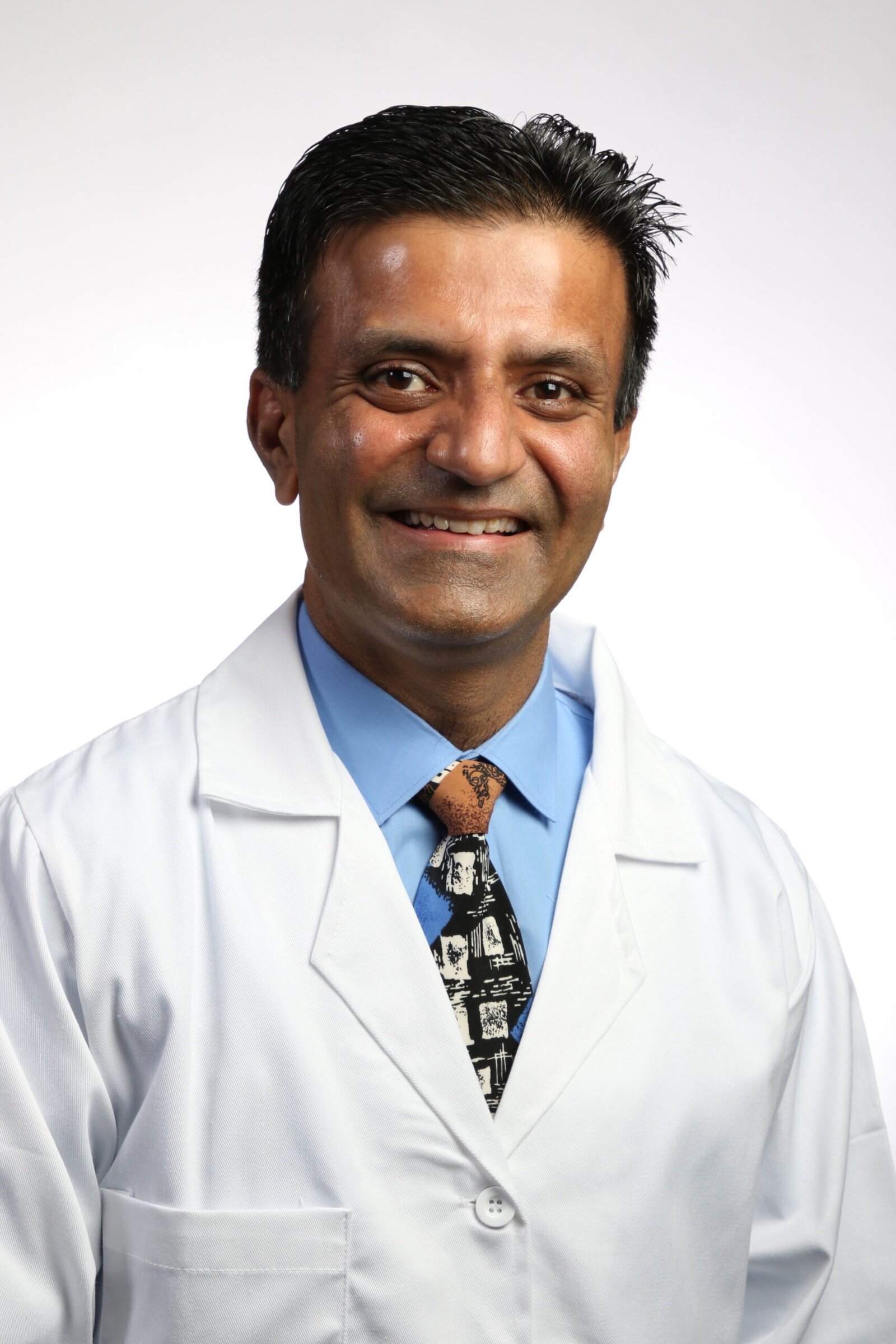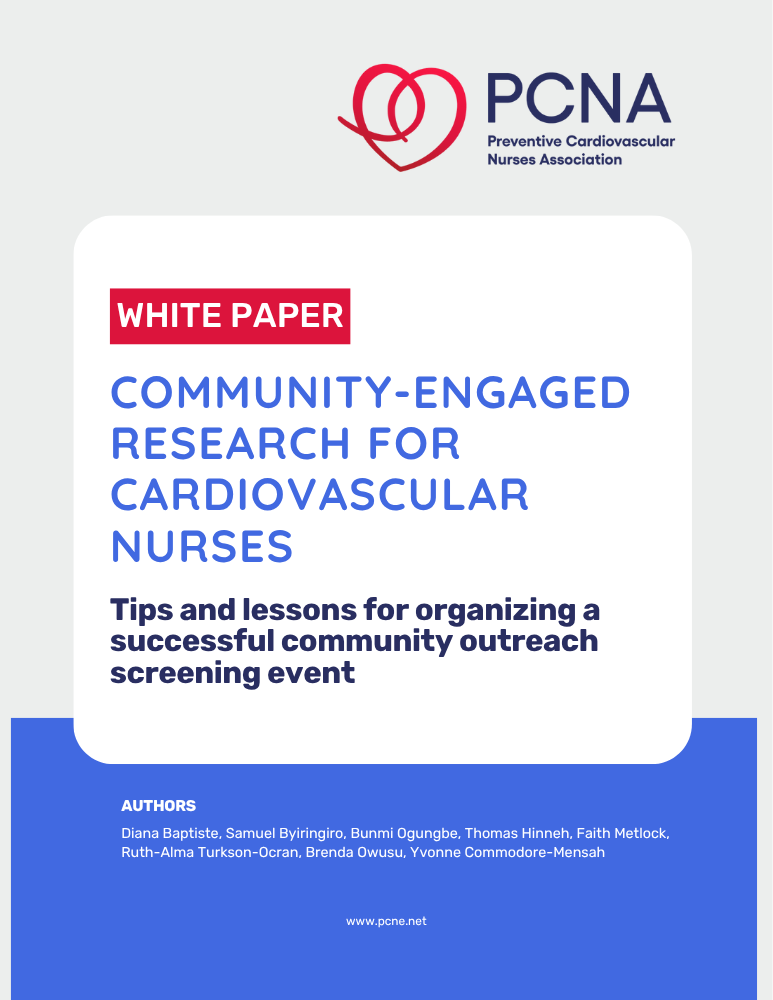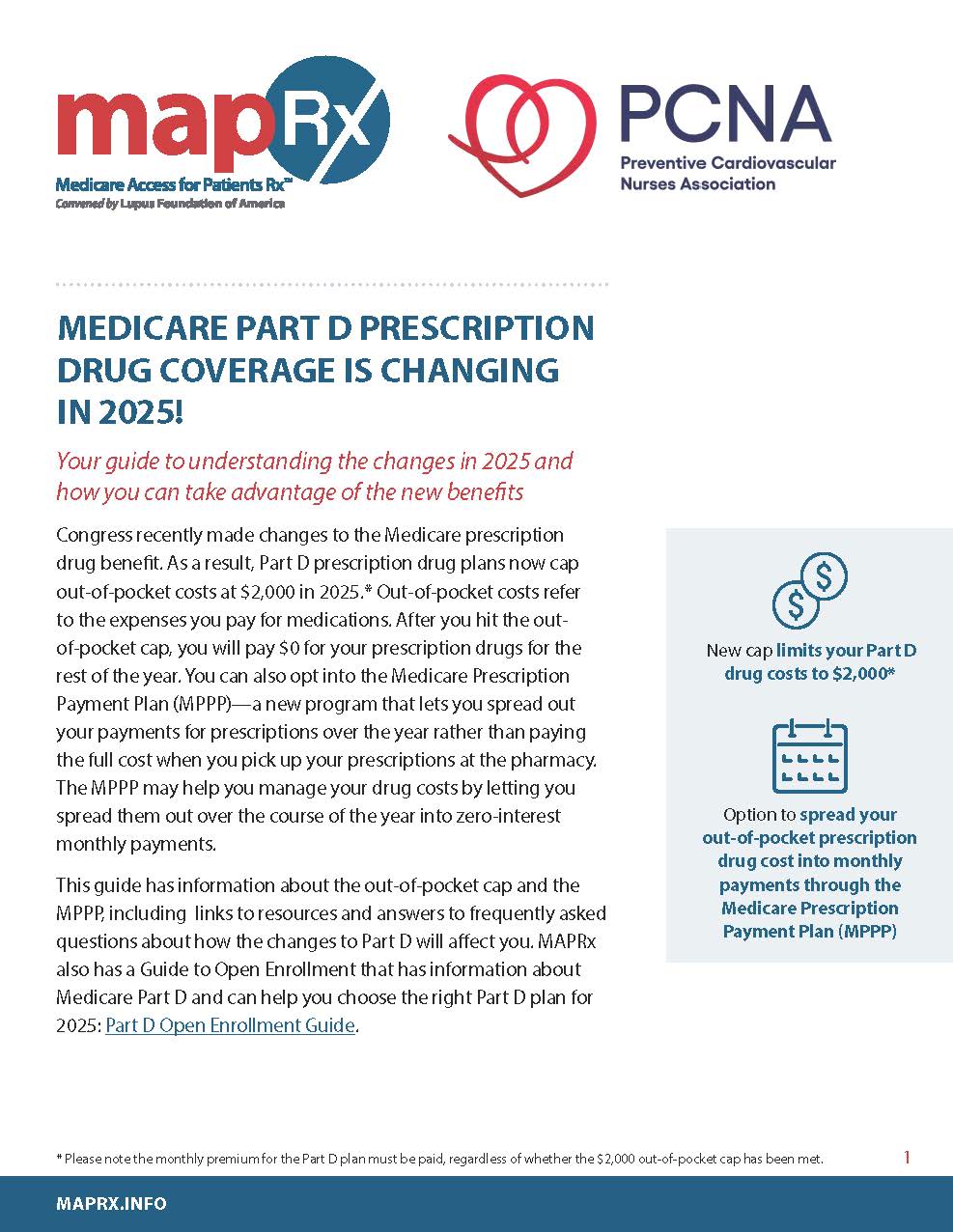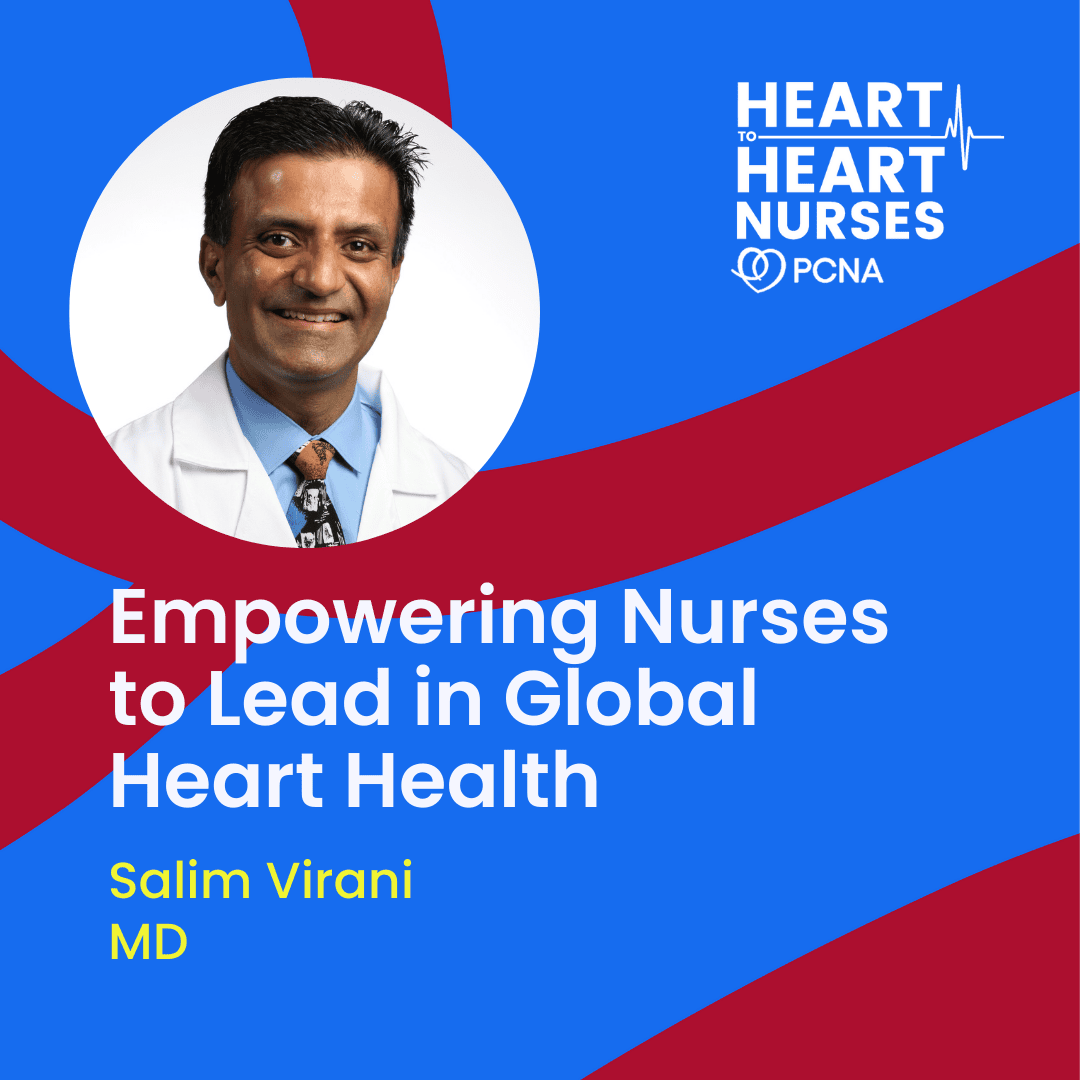Join Dr. Salim Virani as he explores global trends in cardiovascular disease, including shifting risk factors, emerging therapies, and prevention strategies. From disparities in care to the promise of primordial and even pre-primordial prevention, this conversation highlights what nurses and other healthcare professionals can do to improve heart health worldwide.
Episode Resources
[00:00:00] I’m Erin Ferranti, board president for PCNA, and I’d like to welcome you to this episode of the Heart to Heart Nurses Podcast. PCNA is the proud home of cardiovascular nurses and one of the leading figures in the fight against cardiovascular disease. We have the resources you need for your day-to-day practice or to follow your passion to new areas of learning and growth.
Geralyn Warfield (00:19)
Welcome to today’s episode where we will be focusing on past and future global cardiovascular challenges. Today I have the great pleasure of speaking with Dr. Salim Virani. Dr. Virani, could you please introduce yourself to our audience?
Salim Virani (00:32)
Sure. Thanks, Geralyn, for having me on this podcast. I’m Salim Virani. I serve currently as Vice Provost for Research and a Cardiologist at the Agha Khan University, but I oversee research in our six campuses in Asia, Africa, and a small school in UK. Before this, I was a tenured professor in the sections of cardiology and cardiovascular research at Baylor College of Medicine in Houston, Texas.
Geralyn Warfield (00:59)
Well, thank you so very much for joining us today. And I’m very excited about our global perspective of cardiovascular disease conversation today. And I’m hoping you could get us started speaking a little bit about what cardiovascular disease has looked like globally over the last few decades.
Salim Virani (01:17)
This is an important question and something that I think is going to take some time. I would say there are four or five things that our audience would probably want to know about. First is if we look at how cardiovascular disease was in 1990 and compare it to let’s say 2019, 2020, we of course have data now up to 2023 with global burden of disease, which is the most, I would say, comprehensive data set that we have.
There are a few things that we have observed. The first thing that we all as cardiovascular clinicians, whether those are physicians, those are nurses, those are other healthcare practitioners who are in this field need to know is that overall things have been good. What do I mean by that? What I mean by that is that if we look at age standardized mortality from cardiovascular disease, it has gone down. That’s point number one.
The second is that if we look at the overall number of people dying from cardiovascular disease or the number of people living with cardiovascular disease, it has actually gone up. And the reason for that is that death from cardiovascular disease or its prevalence in most cases depends on what’s the mean age of the population and what is the total population. So, if we actually look at the population figures, world’s population was about 5.3 billion in 1990. And in 2019, 2020, or in fact, even if you look at it now, we’re close to 8.2 billion. So, you have more people living in the world. So overall number of people with cardiovascular disease has gone up and overall number of deaths have gone up as well. If you look at the mean age of the population or rather the median age, it was 24 in 1990.
And now it’s 30. So the world has aged a little bit. Although if you look at Africa and Asia, we still have very young populations. If you look at Europe, you look at North America, in most of the countries in these continents, the population has aged. So if I have to summarize, overall age-related mortality has gone down. But overall prevalence of cardiovascular disease and the number of people dying from cardiovascular disease has actually gone up. So for example, if we look at 1990, we had about 12 million deaths from cardiovascular disease annually. Right now we are looking at somewhere close to 19 million deaths every year from cardiovascular disease, right? So that’s some numbers in terms of cardiovascular disease prevalence and mortality and what’s driving that.
Now if we look at the risk factors driving that, what you will notice is that there’s been some change there as well. What are some of those changes that we as clinicians need to know, right? We need to know that in terms of risk factors, some like, you know, smoking has gone down in Europe and in America, but it has actually gone up some in some of the Asian countries.
Even in Europe and America and all over the world, the contribution of diabetes, high BMI, that actually contributes more deaths now than it did before. So overall, if you look at deaths related to hypertension, they’ve gone down, but the actual number of deaths for the same reasons that we discussed earlier have gone up. But there are some where the actual death proportion has increased, but even numbers, you know, in terms of age, standardized mortality from those risk factor hasn’t gone down. And those are the risk factors that are becoming even more important. And those risk factors include fasting blood glucose, diabetes, high BMI.
The other important trend is that if you look at ischemic heart disease, it was the third most common cause of death in 1990. Now it is number one cause of death. We all know this as cardiovascular clinicians. If you look at ischemic stroke, it was number 13. Now it’s down to number eight. So overall cardiovascular diseases, especially ischemic cardiovascular diseases are becoming more and more important in terms of overall causes of basically death in this world. The other last thing I would mention here is that we need to understand that if we look at five common risk factors, right? That we talk about the traditional risk factors, know, which would be smoking, hypertension, overweight, obesity, diabetes, cholesterol. They explain 50 to 60 % of deaths from cardiovascular disease and almost 20, 25 % of overall deaths in the world.
The reason I say this is to make the point that we have a lot of control over cardiovascular disease related deaths. We can make a difference if we work with traditional risk factors. So those are some thoughts I have in terms of trends over the last almost 30 years in terms of cardiovascular disease.
Geralyn Warfield (06:42)
Thank you so much for giving us that global perspective of how the rates, how the percentages, and how the impacts of that cardiovascular disease globally has really affected the ability of clinicians in some ways to address this ever-burgeoning need. As much as we focused on lifestyle modification, for example, and the need for healthy eating and exercise, we still have not turned the corner, if you will, for many of our individuals. But one of the things that I think has made a big difference, a significant difference, in fact, for some of our clinicians is therapeutics and the changes that we’ve seen in the last decade or so.
So, Salim, how have these changes and progress been seen kind of globally? Is it something that varies from region to region, or is it more uniform?
Salim Virani (07:47)
That’s a great question, Geralyn. A couple of responses to that. First is that if we look at deaths in most regions, they have gone down, right? But just like everything else, the decrease is not uniform across all the regions. So, what we see is that in North America, Europe, the rates have really gone down. But if we look at sub–Saharan Africa, we look at parts of South Asia, Central Asia, probably to some extent Eastern Europe as well, the progress has not been uniform. So that’s the first point.
The second point is that even if we project out how things will be in 2050, let’s say, we know that the world’s population will increase to almost 9.8 billion and the median age will increase to 36. It’s 30 right now, it will increase to 36. Now the overall projection is that the number of cardiovascular disease deaths will actually increase quite significantly in 2050 from 19 million deaths per year to almost 35 million deaths per year. And that’s a reflection of the population aging, the overall population increasing. But if you look at age standardized mortality from cardiovascular disease, it will go down by 31%. So almost one third reduction, which is good, right, that when you standardize things for age, the overall mortality goes down.
But even that is not going to be, again, uniform if we continue the trends, right? So even in that case, Europe and North America will see the most benefit, whereas South Asia, Sub-Saharan Africa will not see such robust reductions in age-standardized mortality. So if I have to summarize these, there are two things. One is that currently we have these, I would say global disparities, but then if we don’t take care of this, this will only exaggerate by 2050.
Geralyn Warfield (09:51)
Thank you so much for giving that extra information for us so that we can really be considering what we can do in clinical practice to make a difference for our patients. And one of the things that we’ve traditionally turned to are lifestyle changes, things where we are focusing on healthy eating, exercise, those types of things. But there have been some advances in therapeutics that I think have made a significant difference for our clinicians. Could you talk a little bit more about that progress that we’ve seen?
Salim Virani (10:19)
Yeah, I can tell you that, I mean, I come from the cholesterol world. I mean, I’m a lipidologist. And I can tell you just in the field that I work in, how much progress have we made. If you look at, you know, 80s, that was the first time we had statins that came out, which truly have been a wonder drug. I mean, in terms of reduction of morbidity and mortality, right? And there’s a lot of, there are a lot of lives we have saved because of statin therapy.
But look at what we have now, even in terms of LDL cholesterol lowering, we have azetamide, we have PCSK9 inhibitors, we have alpha-lipoic acid. If you look at triglycerides, right, we only had fibroid therapy. Now we are moving more and more towards other therapies that have shown benefit: Icosapent ethyl, now we are moving towards ApoC3 inhibition, HDL cholesterol, of course, has not been as beneficial as we expected, at least the way we look at it now with what happened with CETP inhibitors, but even there, there’s a story that if you actually lower your ethyogenic lipoproteins, you probably see some benefit from those as well, right? So overall, it’s been very positive news. I remember just 25 years ago when I was coming out of my training, there were still not good times because CETPs were not working, we were not able to do much with triglycerides.
But now if we look at even the pipeline, you know, what we have in the pipeline with Lp(a). I mean, it’s very hopeful. We now actually for the first time have therapies even related to gene editing. As you may know, there’s a trial that actually did use CRISPR therapy to lower LDL cholesterol in humans, right? Very early stages, but we’re actually seeing some benefits. So that concept of once and done approach, if you can do edit the gene for patients with familial hypercholesterolemia, that’s wonderful.
But there are two other things I want to highlight here. It’s not just lipids. If you look at even diet and lifestyle, what we know about a healthy diet and lifestyle is extremely, extremely important. We didn’t know as much about healthy diet and lifestyle. We can talk some more about it in some of the later conversations we have. So that’s extremely important as well. And then if you look at the overall field, look what has happened in the area of diabetes. Just till 2010, we were doing studies to show that our medications that we’re using for diabetes are not harming individuals, right? That was the mandate FDA and US gave to drug companies. But what we found was that now we have medication classes, SGLT2 inhibitors, GLP1 receptor agonists, that actually improve outcomes. So I think this is a very good time, despite all the despair that everybody talks about, there’s actually a lot of hope that a lot of good can be done in this world if you are able to provide access to those therapies to everybody in the world or most people in the world, and at the same time working on a very healthy diet and lifestyle.
Geralyn Warfield (13:28)
I’d like to remind our audience that we are going to be putting the links to the studies and resources that we discuss in today’s episode in the show notes, so make sure that you refer to those for more information. We’re going to take a quick break and we will be right back.
Geralyn Warfield
Well, we are back discussing the global perspectives of cardiovascular disease. And we’ve spent our time thus far talking a little bit about the rates of those incidences and what we can do perhaps to help. But we’re going to talk a little bit more about emerging therapies. And one of the things that we were discussing before we started recording today, Salim, was about the need for primordial care. And I’m hoping you could address that for our audience because I think that’s a huge opportunity for us and for our patients.
Salim Virani (14:12)
I’m glad you brought it up, Geralyn, because that’s exactly where things are moving now, starting earlier and earlier. So one aspect of that is what we’re, you know, we all have heard about primordial prevention, right? Primary prevention is when you have developed a risk factor, you’re managing that risk factor so you don’t develop disease, which will become secondary prevention.
But primordial prevention is, can you basically not develop the risk factor or take care of the risk factor very, very, very early in life? So let me give you some things that would highlight why it is important. So we all know that when we lower cholesterol by one millimole per liter, about 39 milligrams per deciliter for those of our audience who measure it in milligrams per deciliter, we know that for every 39 milligrams per deciliter or one millimole per liter reduction in LDL cholesterol, if you look at the therapeutic data for all the medications including statin therapy, the risk of vascular events go down by 22%.
But if I were to have lifelong levels of LDL cholesterol that were a millimole or about 39 milligrams per deciliter, same that I talked about earlier with statin therapy, if I had lifelong lower levels by one millimole per liter compared to another person, my risk of having a cardiovascular event will go down by 54%, right? More than twice what it would by taking a medication at the age of 40, 45, or 50. The reason for that is that when you have lifelong lower levels, it’s already under the curve. You’re exposed to that risk factor or the lack thereof for a much longer time. And that’s why there’s a very big movement towards lowering risk factors, whichever risk factor might be. I’m talking about cholesterol, but the same holds true for diabetes, the same holds true for hypertension, the same holds true for a good diet or a physical activity or healthy lifestyle, that we need to start early. The earlier we start, the more we will be able to gain even if we are not able to lower a risk factor too much, right? I mean, in fact, I’m giving you example of lifelong lowering, but we know that if you lower LDL cholesterol by, let’s say, 50% at the age of 50 versus you lower it by 30, 35% at the age of 40, you still get more benefit by less lowering at the age of 40, right? Just because you started early, right? You don’t want those atheromas to develop. So that’s the concept, start as early as you can.
A second concept related to that is that when you look at a patient, look at a patient even before that person is born. Now the concept now is becoming not just primordial, but pre-primordial prevention. And if I dig into it, it will all make sense. When we look at women who are pregnant and have pre-eclampsia, gestational diabetes, or other complications of pregnancy, we know that those things are determinants of cardiovascular disease in the offspring. We know that if you measure blood pressure between the ages of two and 10 in offspring of a mother who had pre-eclampsia, their blood pressure is higher, right? We know that cardiovascular disease event rate is higher in those kids as well.
In fact, we know that very early in life, if you measure vascular stiffness, that’s higher in those kids as well. So what I’m saying is that actually even looking at the mother, you can create a risk profile for a child and perhaps intervene early on with a good lifestyle to reduce their risk of having cardiovascular disease in the future, which I would call a pre-primordial prevention. Of course, we have to look at the mom as well because we know that these are risk factors for the mom as well in terms of future risk of cardiovascular disease development. But we should also look at that child that is born because we have the entire life of that child to actually mitigate that risk. And that’s where I would not look at it as a risk. I would look at it as an opportunity that we can actually address this very, very early on.
Geralyn Warfield (18:43)
One of the things that I think is of great interest to our audience in addition to the therapeutics that we’ve discussed and that pre-primordial and primordial prevention is some efforts that we might take when it comes to healthy lifestyle to help make these impacts as great as we possibly can. Could you discuss that a little bit for us?
Salim Virani (19:01)
Definitely two points that I’d like to make. First is that a healthy lifestyle, if we as cardiovascular clinicians, all of us, right, we’re talking here, but all of our audience and anybody else, it’s not just cardiovascular disease risk that goes down. A good lifestyle, you know, when we look at from American Heart Association, for example, life’s simple seven, or now we have eight factors there, sleep is included as well. It’s not only cardiovascular disease risk that goes down because we have shared risk factors. The risk of cancer goes down. The risk for depression and other mental health issues goes down, right? So it’s a lot of outcomes we improve by a good lifestyle. So we should not forget that as we get more and more into the therapeutics.
The second concept here that is extremely important is that we can actually mitigate the genetic risk we have by a healthy lifestyle as well. There are multiple studies now that have shown that if you look at future development of subclinical atherosclerosis or cardiovascular disease, a healthy lifestyle can mitigate 50% of the increased risk associated with bad genes. In fact, if you have good genes but you have a terrible lifestyle, the risk is the same as having very bad genetic makeup but having an excellent lifestyle. So we can actually do a lot. There is a lot of control that we have towards our destiny. You know, having that fatalistic attitude that my dad had a heart attack when he was in his 40s, why should I, you know, even try to work on it because it’s going to be bad? Well, there’s a lot that can be done by a healthy lifestyle. We haven’t even touched the medications, but just a healthy lifestyle can mitigate almost 50 % of the risk that one gets by having bad genes.
Geralyn Warfield (20:49)
I love that there is hope and not everything is doom and gloom. And we can actually make a big difference for ourselves and for our patients by making those healthy choices. Speaking of some things that we can potentially make big differences for, can you talk a little bit about environmental quality and how that affects our cardiovascular risk?
Salim Virani (21:09)
Yes, and I’m glad we’re talking about it because this is really the need of the day. So, you know, unfortunately, if you look at the most recent global burden of disease data, if you look at all cause mortality, air pollution is number four on that list as basically cause of death. As you know, they put those into metabolic risk factors, behavioral risk factors, and environmental risk. So, we’re just talking about poor air quality. I have not talked about non-optimal temperature or unsafe water and sanitation, which are also important causes of death. So just looking at air quality, it’s now number four on the list of causes of death, right?
Now, if you look at cardiovascular disease, then in terms of cardiovascular disease, it is somewhere around number five or number six in terms of the most common cause of death. In fact, if we look at the most common reason why people, the most common diseases that are attributable to particulate matter quality, cardiovascular disease is the number one, right? Is the number one in terms of the disability associated with particulate matter. So that’s one thing we need to know when it comes to this. In fact, the numbers are very, very striking. I mean, if you look at it, seven million people die as a result of indoor and outdoor air pollution every year. 25% of all deaths from heart disease and similar amount of deaths from stroke are actually caused by air quality. So out of that 7 million people who die because of poor air quality, half of those deaths or about 3.5 million deaths are caused by cardiovascular disease due to poor air quality.
The other aspect of this is that the air quality related cardiovascular disease deaths, again, this is that disparity issue we’re talking about. Contribution of that to overall cardiovascular disease related deaths has gone down in some countries. But if you look at some of these developing countries in Asia and Africa, the contribution of poor air quality to cardiovascular disease related deaths has actually gone up. So we need to start taking it very seriously, especially as a lot of these countries that are low income countries are going through that industrialization where they are now actually adding a lot, in terms of the particulate matter as well, and which is not going to be good for people living in those countries. And those countries, by the way, are the most populated countries. They are the ones where most people in the world live.
Geralyn Warfield (23:51)
There’s another topic that I’d love for us to touch on before we wrap up today, and that is the social determinants of health and how that impacts our care and how that impacts the quality of care and the type of care and even the care itself that our patients might receive.
Salim Virani (24:08)
Yes, that’s an interesting topic and of course something that everybody is talking about these things, right? Because we know that social determinants of health affect a lot of things right They affect traditional risk factors. They affect access to care. They affect lifestyle. They affect affordability to health care and perhaps a lot of other things that we don’t know. In fact, social determinants of health are also related to environmental exposures, right? You’re more likely to get actually poor air quality just because you don’t have the money to live in a place where you don’t have a lot of exposure related to PM2.5. So a lot of things that are related can be explained by this and you know, two studies I like to usually quote when we talk about social treatments of health is that there was a very nice study done, I believe it was data from Cleveland Clinic, whereby they showed that actually if you look at our traditional risk stratification algorithms, looking at somebody’s 10 year risk, rather than using that, sometimes just looking at social deprivation and social determinants can give you a better idea of somebody’s 10 year risk. We did a study that was published a few years ago where we basically showed premature cardiovascular disease related mortality in US. And we superimpose basically concept of social vulnerability and you can pretty much superimpose those two and it’s exactly the same kind of color format you get based on quartiles or tertiles, whatever you use, right? Indicating that actually zip code, at least for your audience in the US, is a better marker of somebody dying early from heart disease compared to some of the traditional risk factors we have, and that’s not a good place to be in.
But at the same time, it means that we are able to take care of those social determinants and they are much more difficult, by the way. It’s much easier to provide an anti-hypertensive or a cholesterol lowering pill or diabetes pill. But working on somebody’s transportation related issues, right? Or providing that education or awareness is not as easy. Providing employment to people is not that easy, but perhaps that is where we need to go. We don’t need to look at health and I’m now going beyond cardiovascular health to overall health as a paradigm. We cannot look at health as an isolated concept that we need to take care of. Social development for a community, for a household, for a country, for a region, for the world is equally important when it comes to health as well. So we need to look at health in a more holistic manner, not just as a very limited slice in somebody’s life.
Geralyn Warfield (26:58)
We have literally covered a lot of ground today when we’ve talked about global cardiovascular issues. And I’m wondering if you have one key takeaway that you would like to leave with our audience today.
Salim Virani (27:10)
I think one thing that I would say, a lot of things that may not be under someone’s control, but I think one thing we can all do is I want all our cardiovascular clinicians who are listening to perhaps, and as they are looking at patients who are coming to seek treatment from them, move the needle to five years early, right? If you’re seeing somebody, start working on them early on. If they have younger people in their homes, their kids, know, or young adults, ask them to seek care early on so we can take care of risk factors early on. Perhaps that is something that is totally under our control. That is one message I have for everybody: to start early.
Geralyn Warfield (27:55)
Salim, thank you so very much for being here today and speaking with us about the global perspectives of cardiovascular disease and what each and every one of us can do every single day to move that needle to a different point, a better point so that we can improve cardiovascular care for our patients. Thank you so very much.
Salim Virani (28:13)
Thank you, Geralyn, for the opportunity.
Geralyn Warfield (28:17)
You are most welcome. As we’ve discussed, global cardiovascular disease has been on our minds today and a focus of our talk and we will put those show notes together for you so that you’ve got resources to refer to. And we are really grateful to you for spending time for us today. We’re really grateful to Dr. Salim Virani for being here and sharing his expertise. We would also like to thank our sponsors for this episode and for the podcast series. And this is your host, Geralyn Warfield, and we will see you next time.
Topics
- Global Perspectives
- Health Equity
Published on
September 30, 2025
Listen on:

MD, PhD, FACC, FAHA, FASPC
Related Resources


- « Previous
- 1
- 2






